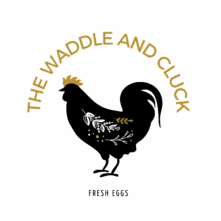March is when I start to see many of our spring wildflowers. The following are six that are blooming right now.
Dandelion is the first wildflower we see, beginning in late winter. It is also the first flower the honeybees feed on, gathering nectar and orange pollen. The name dandelion comes from the French dent-de-lion, meaning “tooth-of-lion” for the jagged leaves that resemble the teeth of a lion. The meaning of dandelion in the language of flowers is oracle, originating from the idea that if you blow off all the seeds on the dried seedhead with one breath, your wish will come true. Fresh root tea has traditionally been used for liver, gall bladder, kidney and bladder ailments.



Henbit and deadnettle are the next to appear. Although the plants are different, the flowers are similar and are often mistaken for each other. Honeybees visit both of them. Henbit has red pollen, deadnettle has orange. Both were introduced from Europe. Henbit belongs to the mint family and gets its name because chickens liked to eat it. The leaves of deadnettle resemble those of stinging nettle but do not have the stinging hairs, so they are “dead.”




Dog-tooth lily is my favorite spring wildflower. It’s called dogtooth because the slender white bulbs look like a dogs’ tooth.
Another name for it is trout lily. It’s called that because the leaves of the plants found in the East look like the coloring of a brook trout (picture below).

Eastern trout lily.
Our trout lily (dog-tooth lily) has a white flower, and the leaves aren’t mottled. It’s a lovely little prairie flower. The faintly purple flower is an inch across and is bent over at the top of a pinkish stalk. There are two deep green, purple edged, folded leaves at the base of the stalk. The flower has six petals, which are pointed, and it has bright yellow stamens (pollen-producing organs). I’ve never seen honeybees on dog-tooth lily.

It’s interesting that two of the flowers mentioned here refer to teeth, dog-tooth lily and dandelion (dent-de-lion), “lion’s tooth”. And, in a sense, so does henbit, as in bite, even though chickens don’t have teeth. What does that say about early spring wildflowers? After winter, it takes teeth to get established and hold on? Maybe.
Small bluet is an annual plant with tiny ¼-inch white to bluish purple flowers. It is common in open, sandy soils of prairies, pastures and the southern tallgrass region. It blooms from late winter to midspring. I’ve not seen honeybees on small bluets.

Spring beauty, also called grass flower, is a low-growing plant with tiny whiteish flowers that have five petals streaked in dark pink. Honeybees visit the flowers for pollen and nectar. Of the 105 different flowers we’ve seen honeybees feeding on, spring beauty is the only one with pink pollen.










